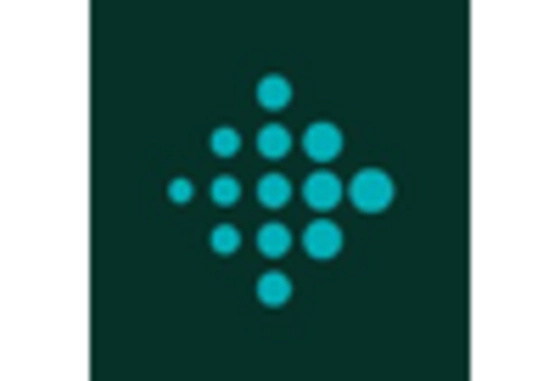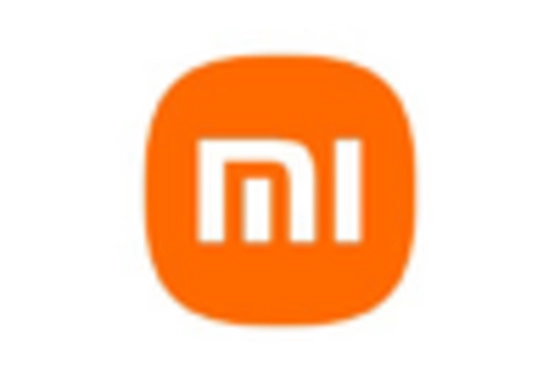Rising Awareness of Sleep Health
The increasing awareness of the importance of sleep health is a primary driver for the Fitness Tracker For Sleep Monitoring Market. As individuals become more informed about the impact of sleep on overall well-being, there is a growing demand for devices that can monitor and improve sleep quality. Reports indicate that nearly 70 million people suffer from sleep disorders, which has led to a surge in interest in sleep tracking technologies. This heightened awareness encourages consumers to invest in fitness trackers that provide insights into their sleep patterns, thus propelling market growth. Furthermore, educational campaigns by health organizations emphasize the need for adequate sleep, further driving the adoption of sleep monitoring features in fitness trackers. Consequently, the Fitness Tracker For Sleep Monitoring Market is likely to experience sustained growth as more consumers prioritize sleep health.
Growing Fitness and Wellness Trends
The growing fitness and wellness trends are pivotal in shaping the Fitness Tracker For Sleep Monitoring Market. As more individuals adopt healthier lifestyles, there is an increasing inclination towards fitness trackers that offer comprehensive health monitoring, including sleep analysis. Recent surveys indicate that approximately 60% of consumers consider sleep quality as a crucial aspect of their overall health. This trend is further supported by the rise of fitness communities and wellness programs that emphasize the importance of sleep in achieving fitness goals. Consequently, fitness trackers that incorporate sleep monitoring features are becoming essential tools for those committed to improving their health. The Fitness Tracker For Sleep Monitoring Market is likely to benefit from this trend, as consumers seek devices that align with their fitness and wellness aspirations.
Integration with Mobile Applications
The integration of fitness trackers with mobile applications serves as a crucial driver for the Fitness Tracker For Sleep Monitoring Market. Mobile applications enhance the functionality of fitness trackers by providing users with detailed insights and personalized recommendations based on their sleep data. This integration allows for a more comprehensive understanding of sleep patterns and facilitates goal setting and tracking. Market analysis reveals that the mobile health application market is projected to grow significantly, with millions of users relying on these applications for health management. The synergy between fitness trackers and mobile applications not only improves user engagement but also fosters a community of users who share their experiences and insights. As this trend continues, the Fitness Tracker For Sleep Monitoring Market is expected to thrive, driven by the demand for connected health solutions.
Technological Advancements in Wearable Devices
Technological advancements in wearable devices significantly influence the Fitness Tracker For Sleep Monitoring Market. Innovations such as improved sensors, artificial intelligence, and machine learning algorithms enhance the accuracy and functionality of sleep tracking features. For instance, the integration of advanced biometric sensors allows fitness trackers to monitor heart rate variability and sleep stages with greater precision. Market data suggests that the wearable technology sector is projected to grow at a compound annual growth rate of over 15% in the coming years, indicating a robust demand for sophisticated fitness trackers. These advancements not only improve user experience but also attract a broader audience, including tech-savvy consumers who seek comprehensive health monitoring solutions. As technology continues to evolve, the Fitness Tracker For Sleep Monitoring Market is poised for further expansion, driven by the desire for innovative and effective sleep tracking solutions.
Increased Demand for Health Monitoring Solutions
The increased demand for health monitoring solutions is a significant driver for the Fitness Tracker For Sleep Monitoring Market. With a growing emphasis on preventive healthcare, consumers are increasingly turning to fitness trackers that provide insights into various health metrics, including sleep quality. Data indicates that the wearable health technology market is expected to reach a valuation of over 60 billion dollars by 2026, highlighting the rising consumer interest in health monitoring devices. This trend is particularly pronounced among older adults who seek to manage their health proactively. Fitness trackers that offer sleep monitoring capabilities are particularly appealing, as they provide valuable data that can inform lifestyle changes. As the demand for health monitoring solutions continues to rise, the Fitness Tracker For Sleep Monitoring Market is likely to experience robust growth.
















Leave a Comment